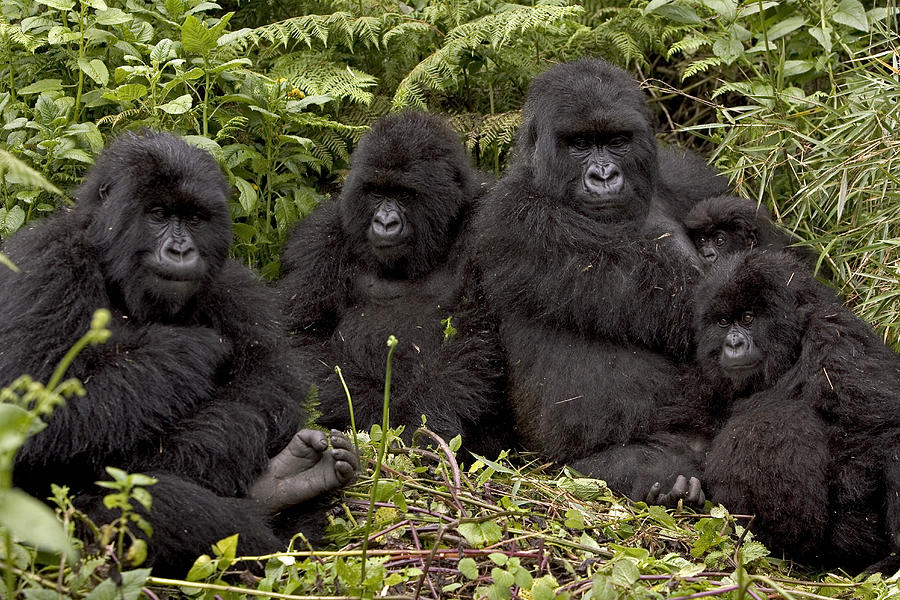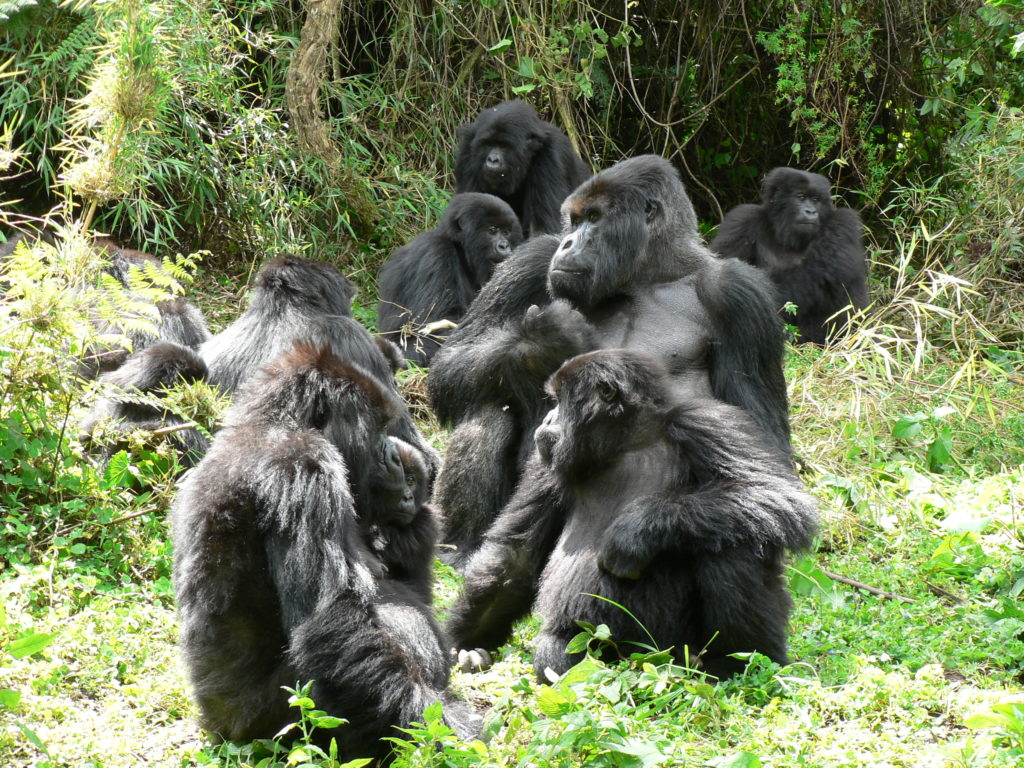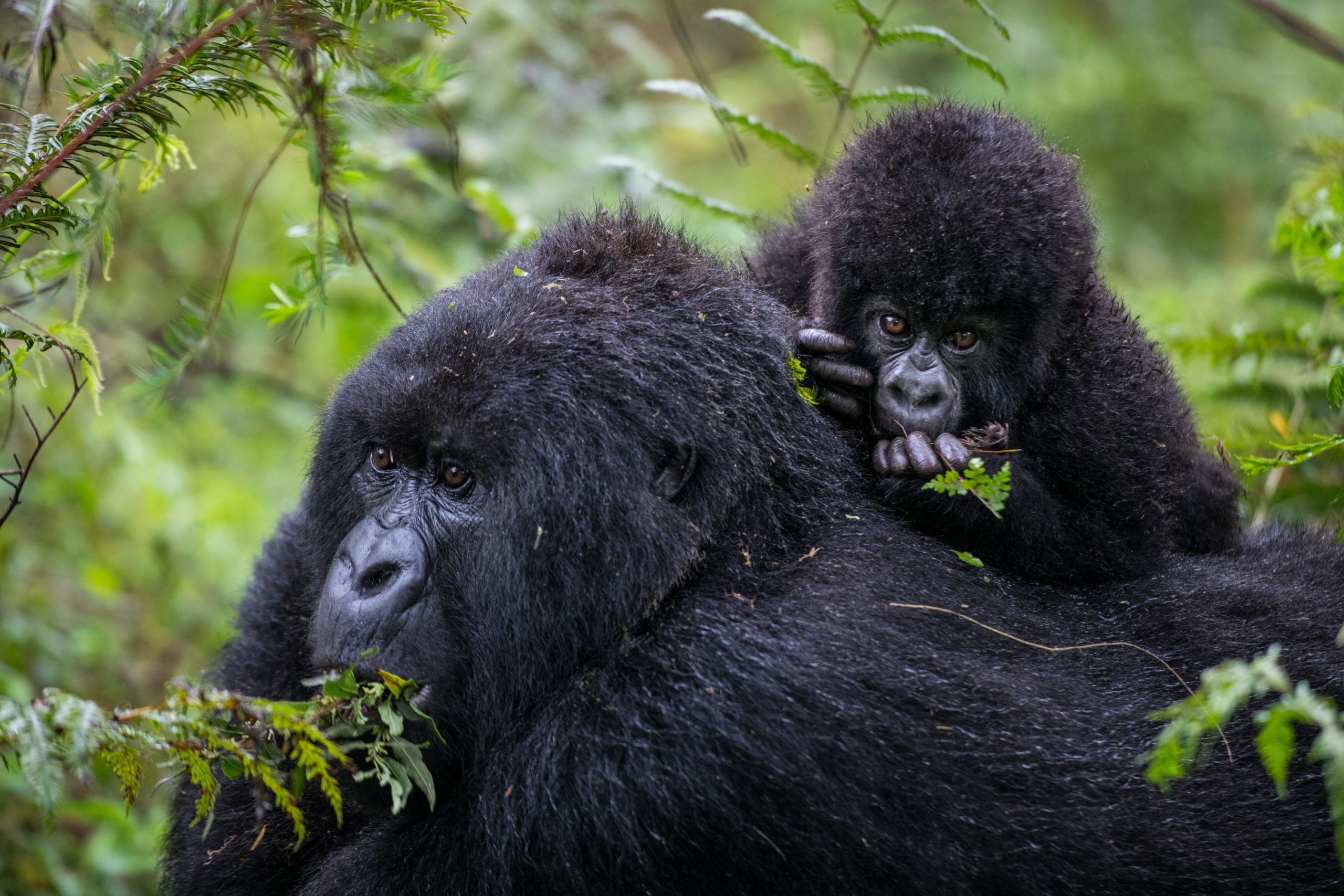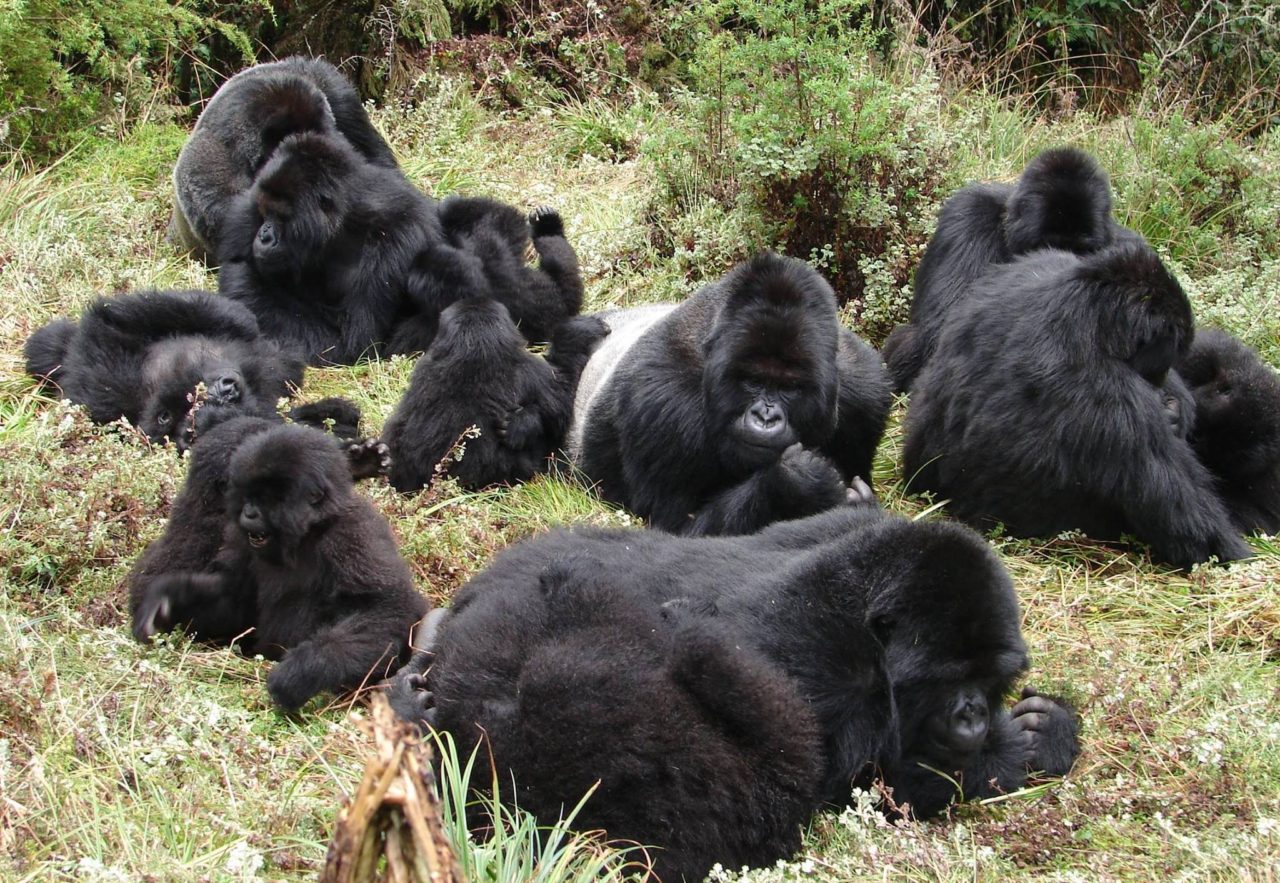Gorilla Families in Volcanoes National Park, Rwanda
Mountain gorilla is one of the two subspecies of the eastern gorilla with the scientific name beringei beringei. Mountain gorillas are listed as endangered by the IUCN as of 2018. As their name implies, mountain gorillas live in forests high in the mountains at elevations of 8,000 to 13,000 feet. The mountain gorillas are endemic to the East Central African region only.
Mountain gorillas are in three East African countries and these include Rwanda, Uganda, and Congo. Those seeking to see the gorillas in the wild can visit parks like Volcanoes national park, Bwindi and Maghinga gorilla national park in Uganda, and Virunga national park in Congo.
Volcanoes national park is found in Northwest Rwanda and it protects the steep slopes of the magnificent mountain range home to these gentle giants. Volcanoes national park is part of the large conservation area of the three large Virunga volcanoes which are shared by Uganda, Rwanda, and Congo with each country protecting its own portion of the Virunga.
Volcanoes cover 160 km of rainforest and encompass eight volcanoes namely Karisimbi, Bisoke, Muhabura, Gahinga, and Sabinyo. In general, the park has a total number of 380 gorillas and around 10 gorilla groups. The gorilla families are as listed below.
Sabinyo gorilla family.

Sabinyo gorilla family.
This is the gorilla family you are going to encounter in the wild without going through so much trouble, they graze in the easily reachable areas of the forest after which they are named Mountain Sabinyo. Even in seasons when food is difficult to find, this gorilla family does not go very far but rather hangs around the lower slopes of the bamboo zone. It is easier to take pictures of this gorilla family because they don’t stay in a bushy environment. This group is headed by Guhonda silver back and has a total number of 12 members.
Amahoro gorilla group.
During the second edition of Rwanda’s gorilla naming ceremony (Kwiti Izina) which is organized every year this gorilla group was named Amahoro which is translated as someone or something whose peacefulness is proudly inspiring. This gorilla family has 18 members who are very welcoming to tourists and only put up a fight in fear that they are in danger. It is led by a male leader called Ubumwe and it is advised not to look directly into his eyes because this might make it seem as if you want to challenge his authority.

Titus gorilla group
Titus gorilla group.
Titus is a very popular gorilla family and this is because of Diana Fossey. It is believed that no other gorilla group had such a special place in the heart of Dian Fossey than the Titus because they shared a lot in common. This gorilla group comprises 8 members. Fossey witnessed how its group leader was born amidst excruciating labor pain by his mother. They were later forced to join other groups where they could be offered security because of the poaching. In an effort to repopulate his group, Titus fathered 20 babies with other 5 females in his group with lots from other groups. By the time he died in September 2009, Titus was overthrown by his son Kuryama. The group is based on the eastern slopes of Karisoke volcanoes not so far from the grave of their Godmother Dian Fossey.
Titus, Uncle, the digit is the famous gorilla that was featured in the documentary about Dian Fossey; Gorillas in the mist and is one of the main characters featured in The lion king a documentary film by BBC that took 2008 by storm.
Susa A group.
In mountain gorillas, the birth of twins isn’t that exciting to the mother because it means entering into a stressful phase of caregiving. When a mountain gorilla gives birth to twins, it usually abandons one of the infants. A mother in this group of 33 members did otherwise. She defined the odds to mother both of her cheerful twins; Impano and Byishimo. This makes this group unique. 10 years ago, the group had the biggest population in Volcanoes national park, brimming with 42 members. 9 of their members split off to form the Susa B group, also known as Karisimbi group.
Umubano group.
This group has 13 individuals, one silverback, six infants, three females, and one black back it was formed by a dominant silverback called Charles who had enough of the fighting in the Amahoro family, he thought there would be another way of solving problems beside violence and this is the exact reason why it was given this name (Umubano) a word in the local language meaning leaving together in harmony.
Susa B group.
These split from the Susa A group in 2008, this group has grown from 9 to 15 members, and it’s all thanks to the multiple births. These thrive in high ranges of mountain Karisimbi – this is Rwanda’s highest mountain range (4,507m) visiting them is more rewarding than any other gorilla group rising towards the highest point in Rwanda where you will get to take in the breathtaking scenery of thousands of hills.

Hiwra gorilla family.
Hiwra gorilla family.
This name means lucky and there are two reasons why it was given this name, it is one of the seven gorilla groups in the Virunga region that has twins. The other reason is that you have a great probability of finding all the 16 members of this group present no matter the time of the year you visit. They seem to have great solidarity and they stick together even in the heat of anger. They live in mountain Sabinyo and they have been roaming off freely since they left the Sabinyo group and Agasha group years back.
Kwitonda gorilla group.
This group consists of 23 individuals and it is led by Karevuro one of the other two dominant silverbacks (Kigoma and Magumu) the group used to live in Virunga and which is Africa’s oldest national park before they settled in the lower slopes of mountain Sabinyo and Gahinga around 2003 by then it was still led by Kwitonda who led his family away from the war zone of Congo.
Bwenge gorilla group.
In 2007 Titus formed another group after being overthrown from heading the Titus group. He formed the Beetsme group, ruled iron fist, and fathered over 20 babies from both within his group and outside. One of the babies was Bwenge, an ambitious son who when turned 19 years led by the revolution that led to the formation of this group. He was followed by two females from Pablo’s group later they grew to 11 members. They live on the slopes of the mountain Karisoke. The group has lost over 6 infants to group fights.

Ugenda gorilla group.
Ugenda gorilla group.
They are 17 members in this group and they have a striking resemblance, when you look at their major body features from head to toe, you will spend one hour trying to tell them apart but without much luck. You will be amazed by the perfection with which God created them. Surprisingly the ranger guides can distinguish them apart without necessarily seeing them but rather by the tone of their vocalizations and rate of heartbeat per minute. This follows a connection they developed with them since the time of their habituation a few years back so they will be identified for you the different individuals and share with you their interesting life stories highlighting the best and worst moments. Ugenda consists of 11 members including 2 silver backs.